Papers by Violetta K . Kostka
Intertextuality in Music, 2021
Tadeusz Kassern was born in Lviv in 1904 and from 1922 lived in Poznan. Since his early youth he ... more Tadeusz Kassern was born in Lviv in 1904 and from 1922 lived in Poznan. Since his early youth he was drawn to music, especially composition, but began making his living as a lawyer. As a composer he had his first notable success in 1928. His impressionistic Concerto for Voice and Orchestra won second prize in a competition organized by the Association of Young Polish Musicians Society in Paris, for which the judges included Ravel, Roussel, Honegger and Schmitt. After a two-month stay in Paris in 1930, Kassern began composing pieces in neoclassical style, also venturing into other neo-styles

Muzyka
Niniejszy artykuł jest poświęcony Miserere na głosy i instrumenty (1993) Pawła Szymańskiego, a je... more Niniejszy artykuł jest poświęcony Miserere na głosy i instrumenty (1993) Pawła Szymańskiego, a jego celem jest omówienie konstrukcji dźwiękowej utworu oraz przypisanych mu znaczeń. Bazując na analizie utworu i różnorodnej literaturze autorka stwierdza, że Miserere jest utworem jawnie intertekstualnym, do tego skomponowanym swobodnie, tj. bez użycia metod algorytmizowanych. Cechą charakterystyczną tego utworu jest to, że zawiera nie jedną, a dwie struktury wyjściowe: modalny chorał gregoriański i czterogłosowy kanon w poszerzonej tonalności dur-moll. Obie struktury wyjściowe zostały połączone z sobą w całość za pomocą − typowych dla Szymańskiego − abstrakcyjnych pomysłów. Dosyć łatwo rozpoznać, że solowe psalmodie występują w kształcie sprzed wieków, natomiast partie chóralne barwowo przypominają chorał, ale zamiast śpiewu monodycznego zawierają recytacje na sześciu wysokościach dźwięku i fragmenty szeptane. Z porównania kanonu z ostateczną kompozycją wynika, że ten pierwszy stał się...

Three of Paweł Szymański’s works point out connections with Ukrainian history and culture. The do... more Three of Paweł Szymański’s works point out connections with Ukrainian history and culture. The documentary Schizophrenia, with soundtrack by the composer, tells about two Ukrainians, victims of psychiatric repressions in the Union of Soviet Socialist Republics. The main vocal part of the opera Qudsja Zaher was written especially for Olga Pasiecznik, an outstanding Ukrainian singer. The Concerto con duoi violini e Violoncello di Concertino obligati e duoi altri Violini, Viola e Basso di Concerto Grosso del Sig' Szymański was performed in Lviv during “Contrasts” festival in 2017.Актуальность исследования. Павел Шиманьский (род. 1954) принадлежит к группе ведущих современных польских композиторов. Украина, как ближайший сосед Польши, не представляла особого интереса для композитора, однако в его творчестве довольно просто отыскать украинские акценты.Цель исследования – выявить характер и творческие проявления связей Павла Шиманьского с историей и культурой Украины.Основные результа...
Muzyka, 2022
Recenzja czasopisma: Musicae Scientiae 22 (2018) nr 1 [wydanie specjalne pt.] „Creative Conceptua... more Recenzja czasopisma: Musicae Scientiae 22 (2018) nr 1 [wydanie specjalne pt.] „Creative Conceptual Blending In Music”, red. Emilios Cambouropoulos, Danae Stefanou, Costas Tsougras

Current Research in Systematic Musicology, 2021
Recent advances in cognitive sciences change musicological perspective on musical works, especial... more Recent advances in cognitive sciences change musicological perspective on musical works, especially on their meanings. According to Gilles Fauconnier, Mark Turner, Lawrence Zbikowski and others, musical concepts, although expressed linguistically, are entirely independent of linguistic concepts. When, for example, we listen to any verbal-musical work, musical concepts together with linguistic concepts form a double-scope process of Conceptual Integration Network (CIN) in which these concepts are blended, and in this manner, the final meaning emerges. In my article, I am presenting-in the light of this theory-the fifth movement of Paweł Szymański's Villanelle for countertenor, two violas and harpsichord to a text by James Joyce [1981]. The CIN for this movement is composed of four mental spaces: text, musical, generic and blended. The text space includes three following concepts: repetitions of chorus lines, rhymes of two kinds and alternative: lover's balancing between fascination and exhaustion. The musical space includes also three concepts: repetitions of the ground bass, variation of the ground bass and alternative: old-timey and (infrequent) modern means. In the generic space I put the ideas of repeatability, cyclicity, circularity, while the blended space-created from selected attributes of text and musical spaces-is the ritual of adoration. The ritual of adoration is the meaning of the fifth movement of Villanelle.
AVANT. The Journal of the Philosophical-Interdisciplinary Vanguard, 2016
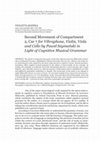
Interdisciplinary Studies in Musicology, 2019
The article is composed of two parts. In the first I discuss Lawrence Zbikowski’s Foundations of ... more The article is composed of two parts. In the first I discuss Lawrence Zbikowski’s Foundations of Musical Grammar, published by Oxford University Press in 2017, which is one of the major musicological works inspired by the latest achievements in cognitive science. Musical grammar, sometimes called cognitive musical grammar by the author, is based mainly on two concepts: an analogy (the mapping of systematic structural relationships between a source domain and a target domain), and a dynamic process (a coherent sequence of phenomena that is distributed over time and typified by parametric modulation or change). The second part of the article is my attempt to apply Zbikowski’s theory to a piece of music. As a musical example I have chosen the second movement of Compartment 2, Car 7 for vibraphone, violin, viola and cello by Paweł Szymański. At the end I conclude that the composer created an analogy between music and a dynamic process known to us from everyday life ─ a journey by train,...
Scientific herald of Tchaikovsky National Music Academy of Ukraine, 2019
Three of Paweł Szymański's works point out connections with Ukrainian history and culture. The do... more Three of Paweł Szymański's works point out connections with Ukrainian history and culture. The documentary Schizophrenia, with soundtrack by the composer, tells about two Ukrainians, victims of psychiatric repressions in the Union of Soviet Socialist Republics. The main vocal part of the opera Qudsja Zaher was written especially for Olga Pasiecznik, an outstanding Ukrainian singer. The Concerto con duoi violini e Violoncello di Concertino obligati e duoi altri Violini, Viola e Basso di Concerto Grosso del Sig' Szymański was performed in Lviv during "Contrasts" festival in 2017.
Tempo, 2018
This article is devoted to the music of Paweł Szymański. The author is convinced that an intertex... more This article is devoted to the music of Paweł Szymański. The author is convinced that an intertextual reading of his music is the most compelling one. Taking into consideration Szymański's two-level technique she interprets his works by means of categories elaborated in the field of literature: intertextuality exponent, interpretant, and text characterised by intertextual play. In the second part of the article two different works are discussed, the first representing the algorithmic, and the second the improvisational method of composing. The author concludes that these works are deeply rooted in tradition and, at the same time, are modern, as well as original, with the interpretants constituting the major source of their originality.

Studies in Musical Theatre, 2010
One of the basic aims of The Vocal and Acting Faculty of the Academy of Music in Gdan´sk is to pr... more One of the basic aims of The Vocal and Acting Faculty of the Academy of Music in Gdan´sk is to prepare students to perform in opera. During the academic year 2005-2006, the Faculty undertook work on an unusual enterprise, the previously unperformed opera by Kassern (1904-1957), Comedy of the Dumb Wife, written in 1953. The proposal that this opera be performed was made by the author of this article, who was engaged in research on this neglected Polish emigrant composer. The performance took place on 19 May 2006, and was recorded. The director chose to present the action in the silent movie convention of the 1930s, with plain scenery and characteristic black-and-white costumes, with the pianist playing at the side of the stage. Although the main purpose of the production was didactic, it went much beyond this original aim, helping to erase one of the 'blank spots' in the history of Polish music. This article looks more closely at this forgotten work and analyses salient features of the composer's craft. The output of Tadeusz Kassern's American period was a blank spot in Polish music history for many years. Interest in it started in 1986 when Kassern's SMT_4.1_art_ Kostka_045-052.indd 45 SMT_4.
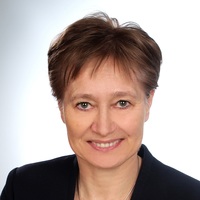

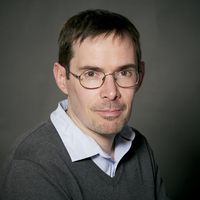

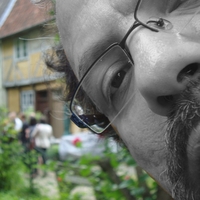
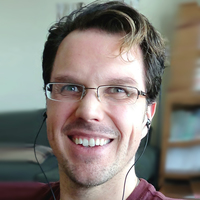



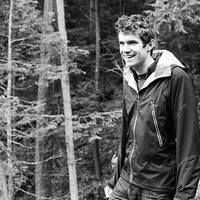

Uploads
Papers by Violetta K . Kostka